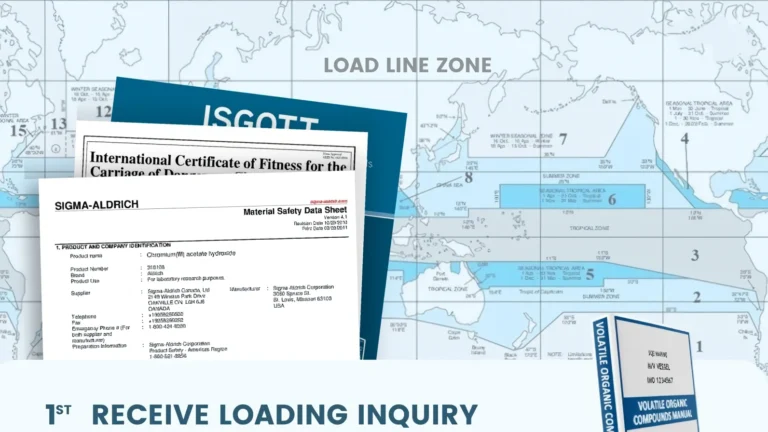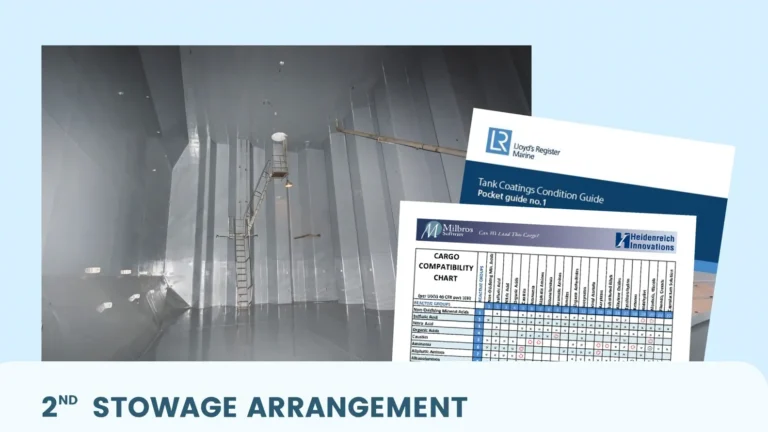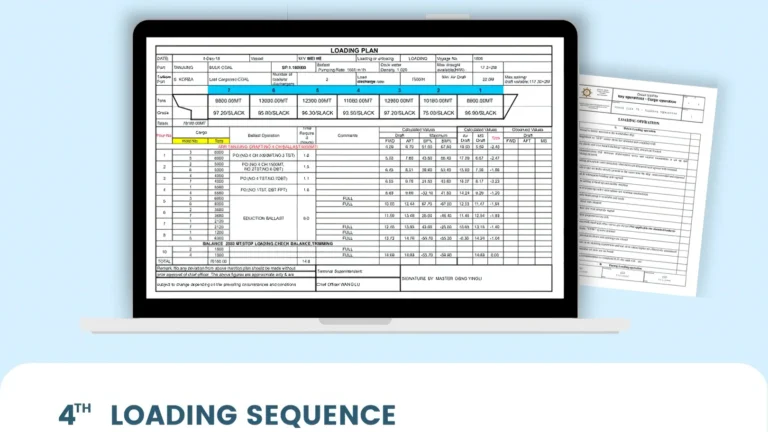Mastering the Art of Loading Plan Preparation on Tankers
In the world of tanker shipping, preparing a loading plan is one of the most crucial steps that determines the smoothness of operations and the safety of the vessel.
By Pranala Digital Transmaritim
05 February 2025
In the world of tanker shipping, preparing a loading plan is one of the most crucial steps that determines the smoothness of operations and the safety of the vessel. From safety checks to cargo calculations, every step must be carried out according to procedure to ensure the ship can operate safely and efficiently.
This article will discuss the key steps in preparing a loading plan for tankers, from receiving a loading inquiry to finalizing the correct loading sequence.

Receive Loading Inquiry (2025). Photo: Pranala Digital Transmaritim
Receive Loading Inquiry
The first step is to receive a loading inquiry from the relevant parties, usually the shipowner or charterer. This initial information is vital as it will form the foundation of the entire planning process.
The required cargo information includes:
-IBC Name and MSDS (Material Safety Data Sheet) to understand the cargo’s chemical properties and safety characteristics.
-Cargo quantity to be loaded in order to determine the correct tank allocation.
-Draft restrictions, including:
Compliance with Load Line Zone limits
Draft restrictions at the Port of Loading (POL) and Port of Discharge (POD)
-Certificate of Fitness (CoF) stating the vessel’s compatibility to carry the cargo.
-Loading Flow Rate in accordance with the P&A Manual, ISGOTT, and Drop Line specifications.
This information is the foundation for the planner to accurately determine the next steps.

Stowage Arrangement (2025). Photo: Pranala Digital Transmaritim
Stowage Arrangement
Once the cargo information is complete, the next stage is to prepare the stowage arrangement or the cargo tank allocation plan. This process requires high attention to detail because each tank has different specifications.
Some tanks are equipped with specific protective coatings, while others are not. Each type of chemical cargo has unique properties that may react with different tank coating materials. Therefore, ensuring tank compatibility with the cargo is critical for the safety of both the ship and the cargo.
In addition to tank compatibility, cargo segregation must also be applied. Segregation is essential to prevent cross-contamination, which can trigger dangerous reactions between cargos.
Documents used in this stage include:
-Material Safety Data Sheet (MSDS)
-Tank Coating Manual
-Cargo Compatibility Chart (USCG, Milbros)

Stability & Strength Calculation (2025). Photo: Pranala Digital Transmaritim
Stability & Strength Calculation
The next step is to perform the stability and structural strength calculations for the vessel. This is one of the most complex stages in preparing a loading plan because it involves numerous variables and scenarios.
For tankers, the stability calculation must also include damage stability calculations as a mandatory requirement. All these calculations are performed using a Loading Computer, specialized software that ensures the vessel’s stability remains safe throughout all stages of loading.
Additionally, the planner must ensure that the ship’s structural strength limits are not exceeded. These can be monitored directly through the Loading Computer, allowing corrective action to be taken if necessary.

Loading Sequence (2025). Photo: Pranala Digital Transmaritim
Loading Sequence
The final step in preparing the loading plan is to create the loading sequence. This document not only describes the loading steps in sequential order but also includes the corresponding ballast operations required to maintain the vessel’s balance.
By following a clear and structured sequence, the vessel can maintain stability, structural integrity, and operational readiness throughout the entire loading process. This ultimately protects both the crew and the cargo from unnecessary risks.
Preparing a loading plan for tankers is not merely a formality. Each step—from receiving the loading inquiry, arranging cargo stowage, performing stability and strength calculations, to setting the loading sequence—plays a crucial role in ensuring safe navigation and operational efficiency.
With proper preparation and the use of tools such as the Loading Computer, tanker vessels can operate safely, efficiently, and in compliance with international safety standards.
